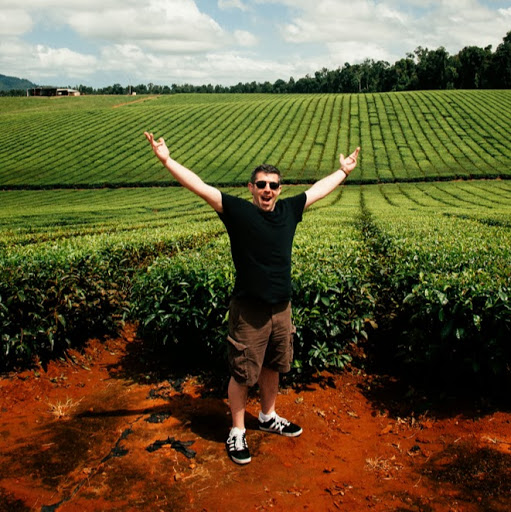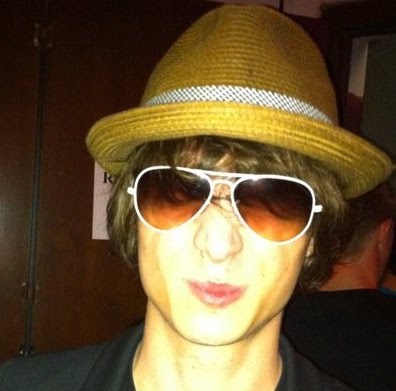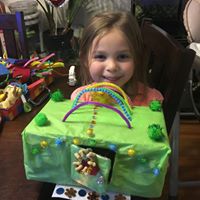Christopher R Kaminski
age ~50
from Burnt Hills, NY
- Also known as:
-
- Christopher R Kaminiski
- Christophe R Kaminski
- Chris Kaminski
- Christophe Kaminiski
- Phone and address:
- 4 Longcreek Dr #2D, Burnt Hills, NY 12027
Christopher Kaminski Phones & Addresses
- 4 Longcreek Dr #2D, Burnt Hills, NY 12027
- Saratoga Springs, NY
- Greenfield Center, NY
- 44 Coachman Dr, Ballston Spa, NY 12020
- Clifton Park, NY
- Scotia, NY
- Slingerlands, NY
- Corinth, NY
Us Patents
-
Cooling Ventilation Circuit For Rotor End Winding And Slot End Region Cooling
view source -
US Patent:6339268, Jan 15, 2002
-
Filed:Feb 2, 2000
-
Appl. No.:09/496727
-
Inventors:Christopher Anthony Kaminski - Niskayuna NY
Emil Donald Jarczynski - Scotia NY
William H. Boardman - Burnt Hills NY
James Michael Fogarty - Schenectady NY -
Assignee:General Electric Company - Schenectady NY
-
International Classification:H02K 900
-
US Classification:310 61, 310 59
-
Abstract:A cooling gas ventilation circuit is provided for an end winding of a rotary machine having a rotor of the type having a plurality of radial slots and a plurality of coils respectively seated in the radial slots, the coils extending beyond a pole face of the rotor to form the end winding. The ventilation circuit is composed of first and second cooling gas passages, respectively defined in at least one turn of each coil of the end winding. Each first cooling gas passage extends from an inlet port in communication with a cavity on one longitudinal side of the turn to an exit port defined on the other longitudinal side of the turn. Each second cooling gas passage extends from an inlet port in communication with the cavity on the one longitudinal side of the turn to an outlet in the form of a radial chimney defined through a plurality of the turns of the coil within the respective radial slot. In the presently preferred embodiment, the second passage is longitudinally offset in the coil structure with respect to the first cooling passage, so that they serve to cool respective portions of the coil. The passages may be but are not necessarily defined in the same turn of their respective coil.
-
Multi-Pole Electric Machine Including Flat Winding For Generator Fields
view source -
US Patent:6437476, Aug 20, 2002
-
Filed:Jun 9, 2000
-
Appl. No.:09/590176
-
Inventors:Robert John Nygard - Saratoga Springs NY
Christopher Anthony Kaminski - Niskayuna NY
Yu Wang - Clifton Park NY -
Assignee:General Electric Company - Schenectady NY
-
International Classification:H02K 346
-
US Classification:310261, 310208, 310195, 310264
-
Abstract:A generator rotor includes a rotor body having defined pole regions with pole faces and parallel sides adjacent the pole faces. A winding module is fitted over the parallel sides of the rotor body, and a pair of spindles are secured to respective ends of the rotor body. The spindles secure opposite sides of the winding module to the rotor body. The spindles preferably include a notch that is shaped to receive one side, respectively, of the winding module. With this construction, flat windings can be used for the winding module, eliminating the need for a curved module to fit over the spindle.
-
Non-Metallic Structural Rotor Enclosure
view source -
US Patent:6495942, Dec 17, 2002
-
Filed:Jan 26, 2000
-
Appl. No.:09/491504
-
Inventors:Christopher A. Kaminski - Schenectady NY
Richard J. Keck - Schenectady NY
Yu Wang - Schenectady NY -
Assignee:General Electric Company - Schenectady NY
-
International Classification:H02K 500
-
US Classification:310262, 310264, 310271, 310214, 310 89
-
Abstract:A non-metallic structural enclosure for a generator rotor replaces conventional containment components including rotor wedges, rotor teeth and retaining rings. The enclosure includes a non-metallic tube formed of a plurality of spaced rings or of a continuous tube including ventilation holes or slots. The simplified rotor assembly serves to restrain the winding against centrifugal forces with a more highly optimized use of space and materials. The arrangement allows more space for copper and ventilation, thereby benefiting both efficiency and the performance of the machine. The use of individual rings has the additional benefit of providing restraint against centrifugal forces without reducing the effectiveness of cross slots in the rotor body from correcting peripheral dissymmetries in rotor stiffness. The rings also provide openings for ventilation without introducing stress concentrations in the enclosure.
-
Cross-Shaped Rotor Shaft For Electrical Machine
view source -
US Patent:6590311, Jul 8, 2003
-
Filed:Jun 9, 2000
-
Appl. No.:09/589688
-
Inventors:Yu Wang - Clifton Park NY
Christopher Anthony Kaminski - Niskayuna NY
James Pellegrino Alexander - Ballston Lake NY
George Hanna Ghanime - Ballston Spa NY -
Assignee:General Electric Company - Schenectady NY
-
International Classification:H02K 122
-
US Classification:310261, 310269
-
Abstract:A rotor for a rotating electrical machine includes pole faces arranged at locations on either side, respectively, of the rotor D-axis and fins arranged along the rotor Q-axis. The fins increase a section bending moment of inertia along the Q-axis, thereby reducing the need for deep slots in the pole faces extending along the D-axis, resulting in better symmetry of bending stiffness.
-
Method And Apparatus For Concentric Assembly Of Structural Rotor Enclosure On An Electrical Machine Rotor
view source -
US Patent:6629356, Oct 7, 2003
-
Filed:Dec 7, 2001
-
Appl. No.:10/005093
-
Inventors:Yu Wang - Clifton Park NY
Richard Nils Dawson - Vooheesville NY
Christopher Anthony Kaminski - Niskayuna NY
Robert John Nygard - Saratoga Springs NY
James Pellegrino Alexander - Ballston Lake NY -
Assignee:General Electric Company - Schenectady NY
-
International Classification:H02K 1500
-
US Classification:29596, 29598, 29606, 310203, 310208, 310218
-
Abstract:A method is disclosed for fitting a rotor enclosure over at least one assembly of field windings mounted on a rotor core, said method comprising the steps: applying a force to elastically reduce a circumference of the at least one assembly of field windings mounted on the rotor core, where the reduction in circumference is greater than a circumference reduction due to just eliminating clearances between adjacent end-turns of windings; generating a clearance between the field windings and the rotor enclosure due to the application of the force; axially sliding the rotor enclosure over the at least one assembly of field windings while the circumference is reduced, and releasing the force to allow the circumference of the at least one assembly of field windings to expand and cause the enclosure to tightly fit on the at least one assembly of field windings.
-
Removable Self-Locking Field Winding Block
view source -
US Patent:6703733, Mar 9, 2004
-
Filed:Nov 22, 2000
-
Appl. No.:09/718241
-
Inventors:Yu Wang - Clifton Park NY
Christopher Anthony Kaminski - Niskayuna NY
Robert John Nygard - Saratoga Springs NY
James Pelligrino Alexander - Ballston Lake NY -
Assignee:General Electric Company - Niskayuna NY
-
International Classification:H02K 348
-
US Classification:310 85, 310264, 310262, 310261, 310214
-
Abstract:A multi-pole electric machine rotor assembly includes a rotor forging including a rotor body having poles with pole faces and a winding module including a plurality of field windings positioned adjacent the pole faces and winding insulators disposed between each successive pair of the field windings, respectively. A winding block, disposed in engagement with the winding module, is shaped to be shifted to a final position relative to the winding module when the rotor assembly rotates at about its rated speed to thereby compress the winding module. Either the winding block or the winding module can be displaced by centrifugal forces during rotation. In the final position, the winding block is locked by friction in a position to maintain compression in the winding module. The winding block serves to provide a pre-stress in the field windings to keep the field windings tight over the design range of spin speeds, thereby controlling winding position and reducing alternating radial movement.
-
Apparatus And Method For A Field Winding Assembly Mountable On A Rotor In A Synchronous Machine
view source -
US Patent:6710497, Mar 23, 2004
-
Filed:Oct 16, 2001
-
Appl. No.:09/977211
-
Inventors:Yu Wang - Clifton Park NY
Richard Nils Dawson - Vooheesville NY
Christopher Anthony Kaminski - Niskayuna NY
Robert John Nygard - Saratoga Springs NY
James Pellegrino Alexander - Ballston Lake NY
John Arthur Urbahn - Saratoga Springs NY -
Assignee:General Electric Company - Schenectady NY
-
International Classification:H02K 055
-
US Classification:310208, 310261
-
Abstract:A winding assembly for a rotor is disclosed comprising a plurality of rotor field windings and a field support holding said plurality of windings in said winding assembly, wherein the winding assembly is mountable on said rotor.
-
Cooling System For Modular Field Windings Of A Generator
view source -
US Patent:6759770, Jul 6, 2004
-
Filed:Apr 11, 2003
-
Appl. No.:10/411214
-
Inventors:Yu Wang - Clifton Park NY
Christopher Anthony Kaminski - Schenectady NY -
Assignee:General Electric Company - Schenectady NY
-
International Classification:H02K 900
-
US Classification:310 52, 310 54, 310 55, 310 56, 310261
-
Abstract:Modular field windings including multiple coils are provided about a rotor core. Axially spaced spacers maintain the coils circumferentially spaced from one another, the spacers and coils defining radially directed openings in the rotor. Flow directing elements are disposed in the openings to maintain constant or increased flow velocity of cooling gas in a radial outward direction along passages between the elements and the coils to maintain or increase the heat transfer coefficient, thereby enhancing the cooling effect of the gas flow on the turns.
Name / Title
Company / Classification
Phones & Addresses
INVENIAM INC
Resumes

Christopher Kaminski
view sourceLocation:
United States

Christopher Kaminski
view sourceLocation:
United States
Youtube
Flickr
Googleplus

Christopher Kaminski
Work:
Deluxis Entertainment - Founder and CEO (2009)
Sega - Producer (2006-2009)
IBeta - QA Manager (2005-2006)
Jaleco - Associate Producer / QA (2003-2005)
Sega - Producer (2006-2009)
IBeta - QA Manager (2005-2006)
Jaleco - Associate Producer / QA (2003-2005)
Education:
University of Colorado at Boulder - Japanese / Computer Science
About:
Founder and CEO of Deluxis Entertainment
Bragging Rights:
Board Member of Producers Guild of America, NW Chapter

Christopher Kaminski

Christopher Kaminski

Christopher Kaminski

Christopher Kaminski

Christopher Kaminski
Myspace

Christopher Kaminski
view source
Christopher Kaminski
view source
Christopher Kaminski
view source
Christopher James Kaminski
view source
Christopher Kaminski
view source
Christopher Kaminski
view source
Chris Kaminski Cooley
view source
Christopher Kaminski
view sourceClassmates

Christopher Kaminski
view sourceSchools:
Bridgewater-Raritan West High School Bridgewater NJ 1979-1983
Community:
Madilyn Leonard, Lawrence Trager, James Hann, Maureen Rose, Cindy Singer

Christopher Kaminski
view sourceSchools:
Bayonne High School Bayonne NJ 1992-1996
Community:
Dianne Hoffman

Christopher Kaminski
view sourceSchools:
Notre Dame-Cathedral Latin High School Chardon OH 1995-1999

Notre Dame-Cathedral Lati...
view sourceGraduates:
Christopher Kaminski (1995-1999),
Steve Daher (1993-1997),
Kevin Dickinson (1994-1998),
Patrick Conochan (1996-2000)
Steve Daher (1993-1997),
Kevin Dickinson (1994-1998),
Patrick Conochan (1996-2000)

La Puente High School, La...
view sourceGraduates:
Yvonne Reynoso (1984-1988),
daniel lozano (1974-1978),
Christopher Kaminski (1977-1981),
Wendy Thompson (1968-1972)
daniel lozano (1974-1978),
Christopher Kaminski (1977-1981),
Wendy Thompson (1968-1972)

Saint Margaret Mary Schoo...
view sourceGraduates:
Chris Kaminski (1972-1980),
Michael Zuck (1975-1977),
Christopher Snyder (1965-1971),
Mary Crowell (1960-1968)
Michael Zuck (1975-1977),
Christopher Snyder (1965-1971),
Mary Crowell (1960-1968)

Garden City Junior High S...
view sourceGraduates:
Chris Kaminski (1993-1996),
Amy Babbitt (1994-1996),
Crystal Poole (1997-1999),
Cherine Hughley (2000-2004),
Denne Douglas (1987-1990),
David Sirotin (1985-1988)
Amy Babbitt (1994-1996),
Crystal Poole (1997-1999),
Cherine Hughley (2000-2004),
Denne Douglas (1987-1990),
David Sirotin (1985-1988)

Holy Family School, Edmon...
view sourceGraduates:
Jeremy McConnell (1992-1994),
Chris Kaminski (2000-2004),
Sherilyn Haugh (1990-2000),
Robin Obrigewitsch (1988-1992)
Chris Kaminski (2000-2004),
Sherilyn Haugh (1990-2000),
Robin Obrigewitsch (1988-1992)
Get Report for Christopher R Kaminski from Burnt Hills, NY, age ~50

















